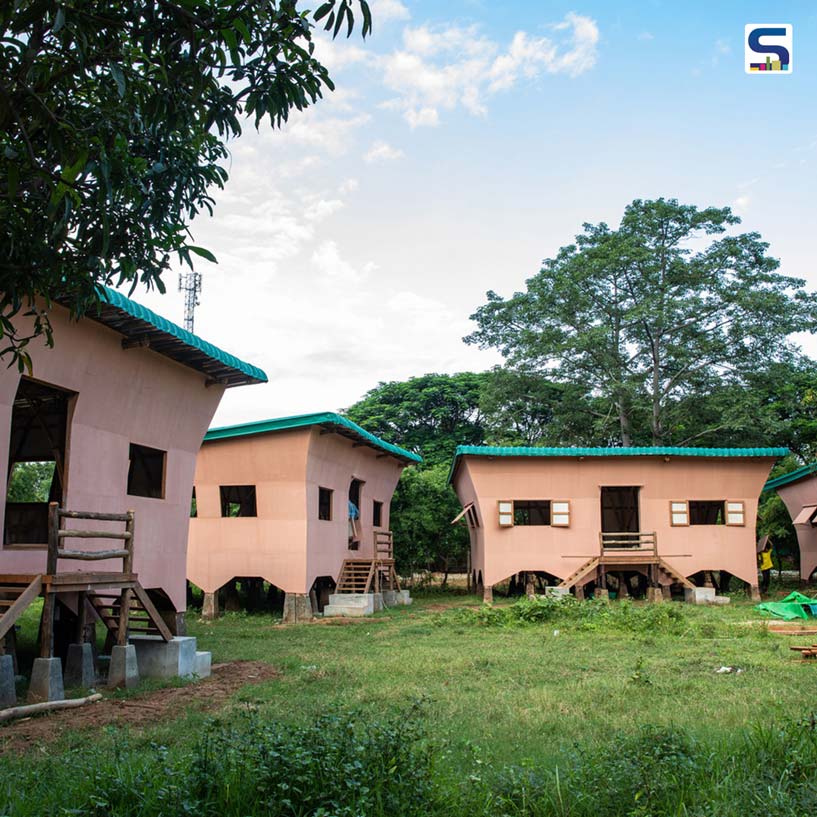
Since the military coup of February 2021, Housing NOW has been developing a modular bamboo housing system specifically engineered for emergency and conflict-affected communities across Myanmar. The country is home to hundreds of bamboo species yet conventional construction typically relies on large-diameter culms, which are scarce and expensive. Smaller culms, though abundant and affordable, are usually relegated to low-value uses such as fencing or farming. Housing NOW identified a crucial opportunity in this material by bundling and reconfiguring these small-diameter culms into engineered structural frames. The team, thereon, created a robust and scalable construction method suited to extreme conditions. SURFACES REPORTER (SR) highlights how the earthquake near Mandalay tested the structural strength that confirmed innovative design backed by local materials to fabricate architecture which is capable of withstanding war, natural calamities and uncertainties.
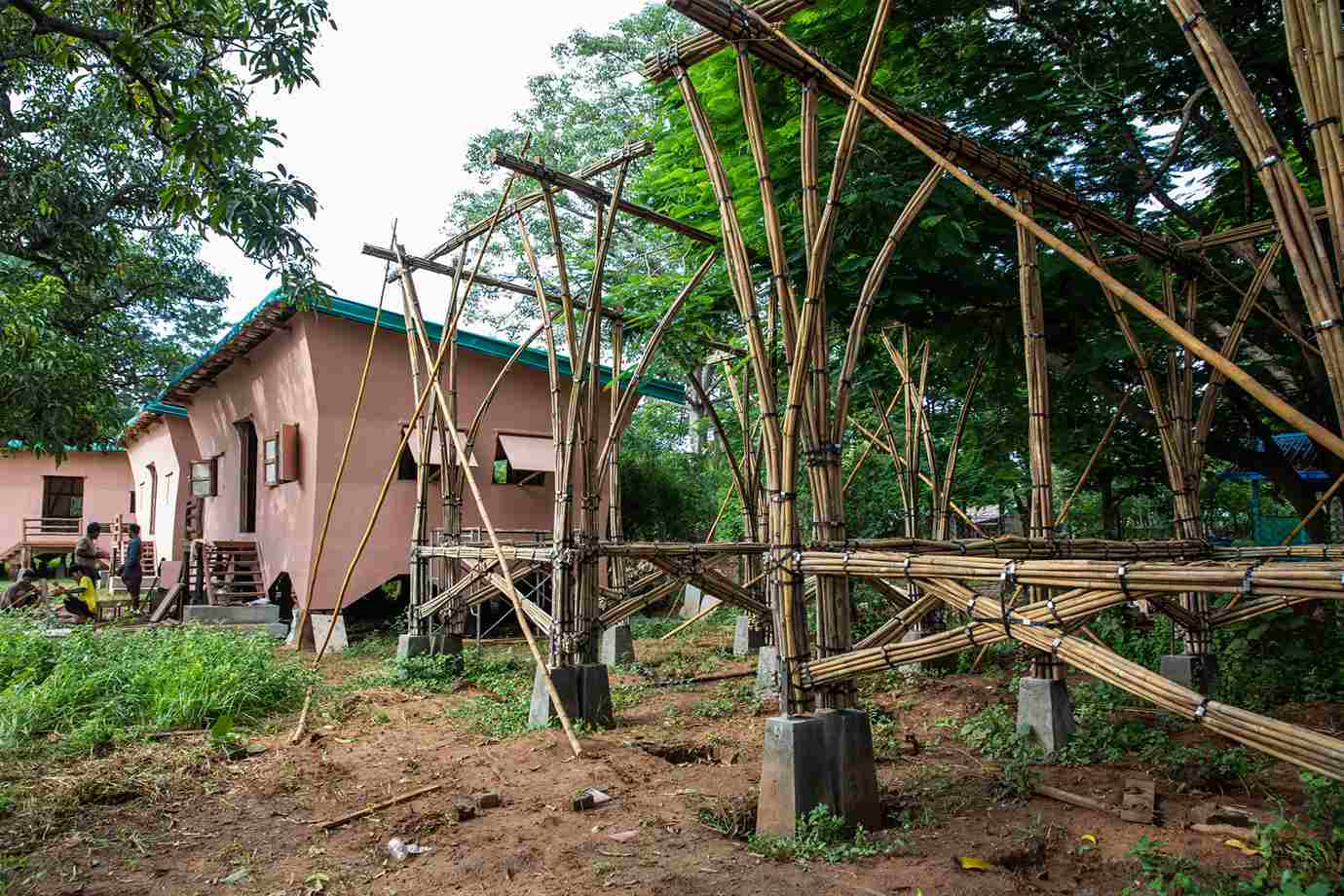
79 units now stand across conflict regions, and 500 DIY Bamboo Manuals have been distributed to help families build their own homes.
A low-cost model
Each frame integrates the column, floor beam, roof beam and diagonal bracing into a single, continuous assembly. Four such frames interlock to create a rigid structural core, upon which floors, walls and roofing are mounted. Over the course of the project, five full-scale prototypes were built and stress-tested using lateral pulls with a dynamometer to simulate wind loads. Frames were pushed to failure to precisely measure structural thresholds and refine the system for maximum performance in harsh weather. Before any large-scale implementation, 10 pilot units were constructed across multiple contexts, right from pre-school and orphanage buildings in Hmawbi to family homes in Yangon’s informal settlements and a community centre for displaced Arakan families in Kyauktaw with UNHCR. These pilots demonstrated the system’s adaptability in rural, peri-urban and conflict-heavy zones.
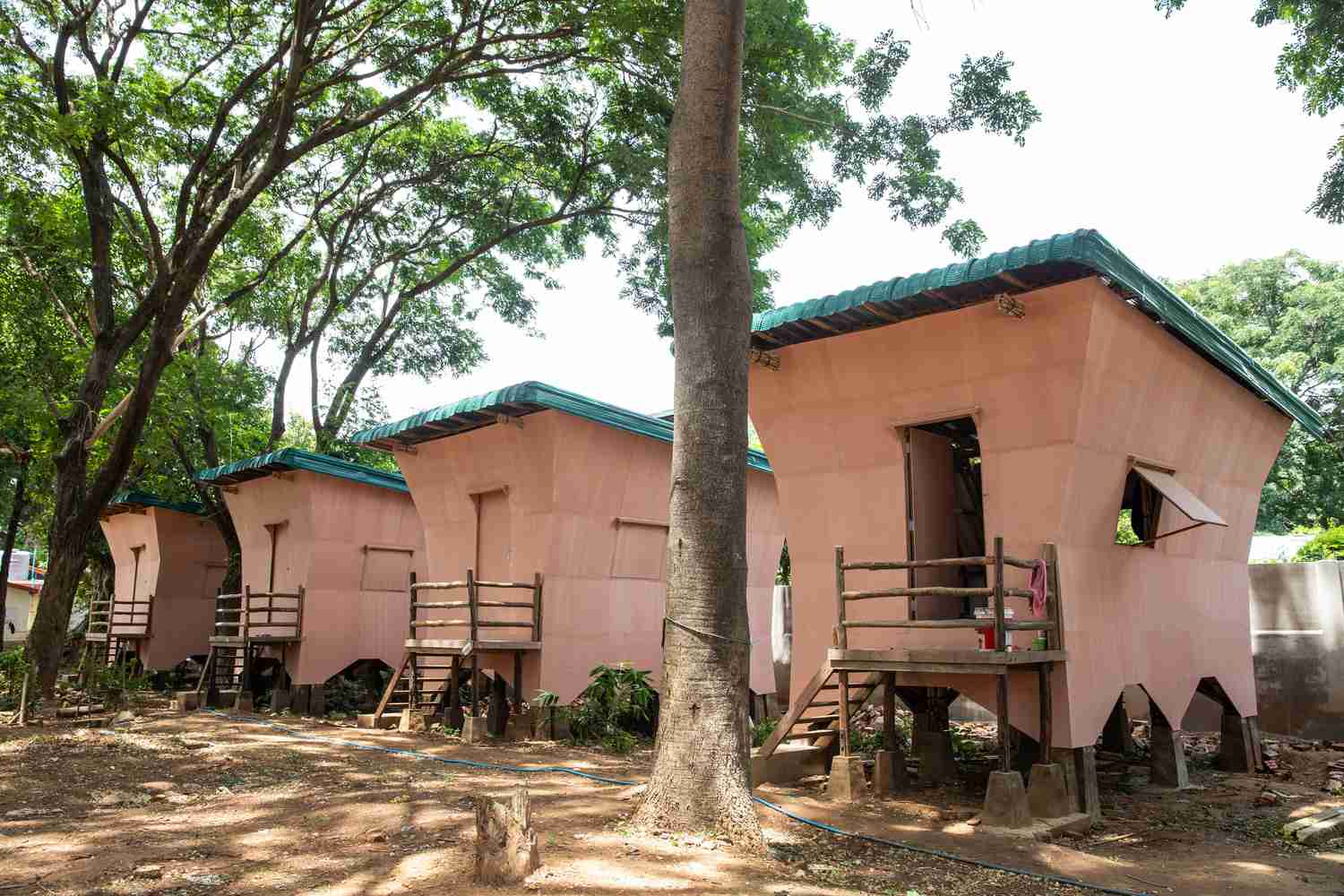
Housing NOW has been developing a modular bamboo housing system specifically engineered for emergency and conflict-affected communities across Myanmar.
The most decisive validation emerged during the construction of a 26 unit IDP camp near Mandalay. Just after the project was completed, a massive 7.7-magnitude earthquake struck, with the epicenter only 15km from the camp. While Mandalay suffered widespread destruction, all 26 bamboo houses withstood the earthquake without damage. This rare, real-world seismic performance underscored the reliability of Housing NOW’s approach and proved that rigorous field testing can produce disaster-resilient architecture even in active war zones.

The system’s architecture relies on standardized, jig-fabricated frames made from bundled small bamboo culms, resulting in a lightweight yet stiff structure.
The system’s architecture relies on standardized, jig-fabricated frames made from bundled small bamboo culms, resulting in a lightweight yet stiff structure. Entire houses can be built in under a week at a cost of just USD 1,000 to USD 1,300, which is roughly equivalent to the price of a smartphone. Yet building in Myanmar involves far more than cost and material choices. Initial attempts to move prefabricated frames on custom trailers failed due to military checkpoints that seized cargo or extorted the team. In response, the strategy shifted to transporting only raw bamboo and jigs, with all fabrication happening directly on-site. In remote regions, mobile treatment tanks process local bamboo species. At Kyauktaw, construction could proceed only during a temporary ceasefire, highlighting the complexities of building amid active conflict.
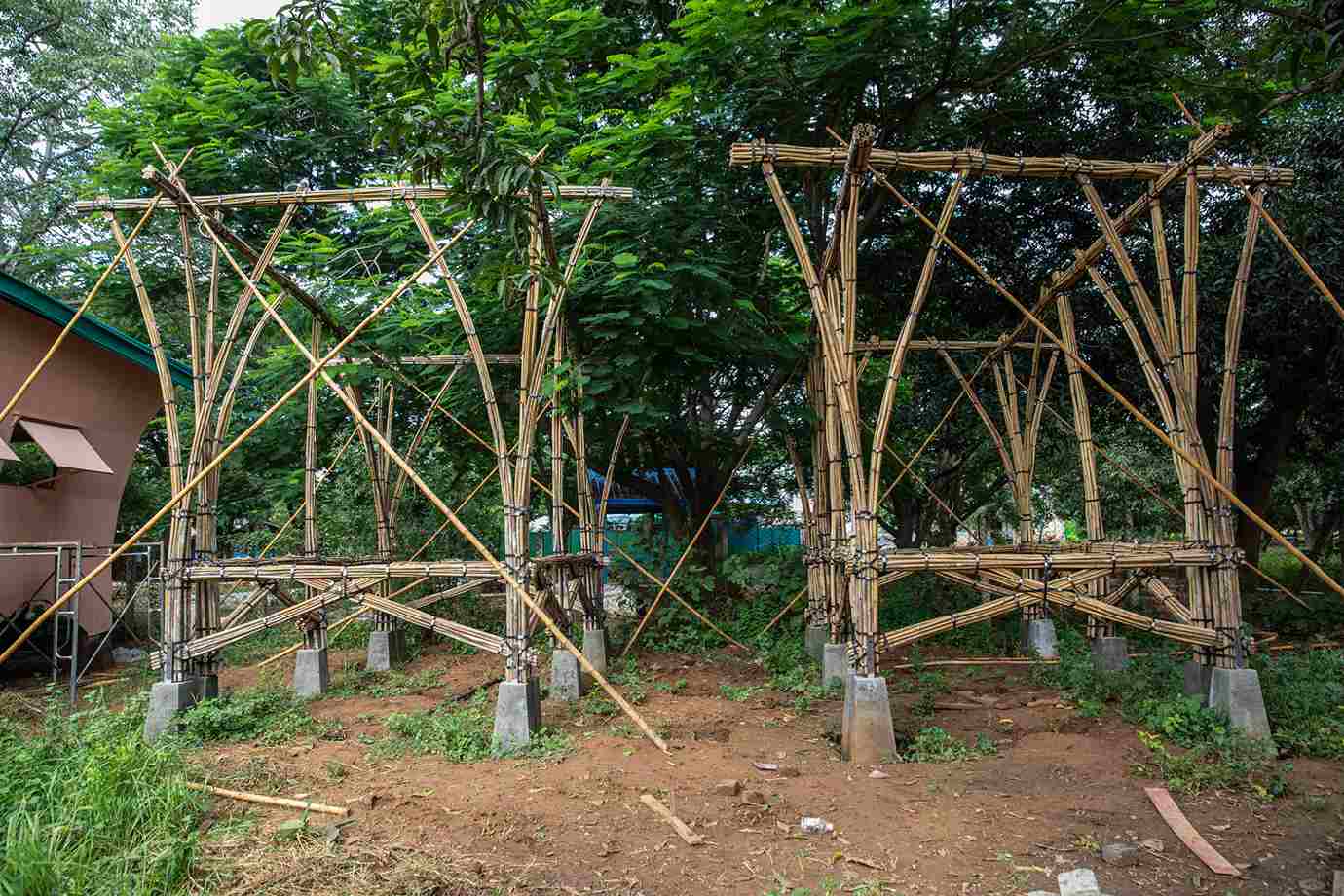
Entire houses can be built in under a week at a cost of just USD 1,000 to USD 1,300, which is roughly equivalent to the price of a smartphone.
Future of disaster-proof housing
A participatory model is central to the system. Displaced communities work directly on construction, making decisions on window sizes, partition layouts and entrances. In Hmawbi, a displaced carpenter introduced an innovative interwoven bamboo shingle flooring design that was incorporated into the build. Local involvement is not only empowering but it is necessary for safety. Reportedly, under Myanmar’s conscription laws, skilled workers risk arrest if they travel across regions, thus making hyper-local construction essential.
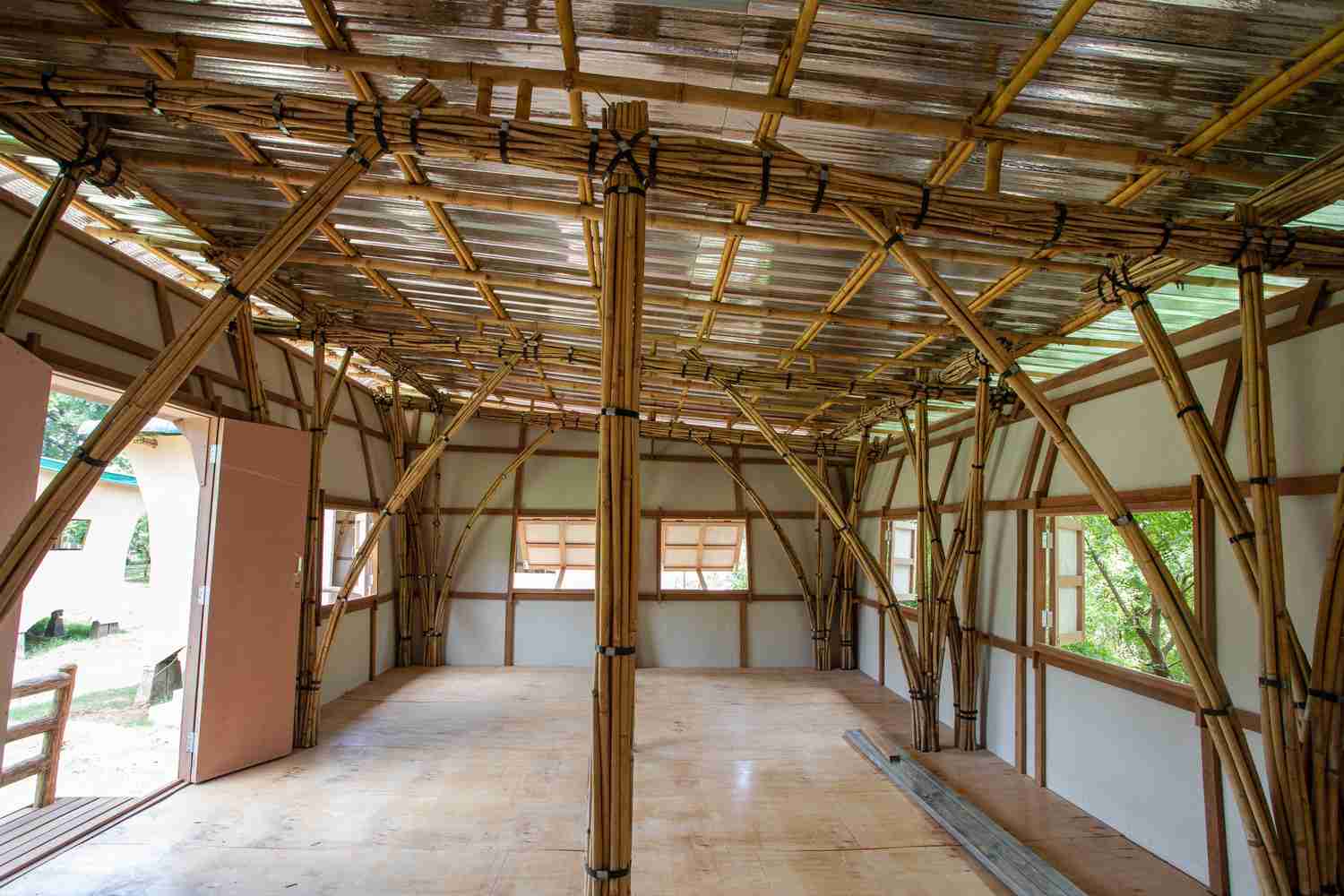
Each frame integrates the column, floor beam, roof beam and diagonal bracing into a single, continuous assembly.
Myanmar’s housing crisis is compounded by overlapping disasters. Since 2021, nearly 110,000 civilian homes have been burned, Cyclone Mocha displaced around 360,000 people and widespread flooding from Typhoon Yagi in 2024 forced millions from their homes. Earthquakes continue to threaten the already fragile communities. In this context, Housing NOW’s system is not experimental speculation but it is a proven, field-ready solution. When the ground shook violently in March 2025, residents across Myanmar braced for devastation. Yet the 26 bamboo houses near Mandalay stood firm, demonstrating the power of a material often dismissed as primitive. Behind this breakthrough is Blue Temple founder Raphael Ascoli, whose transition from corporate life in Japan to community-centered design in Myanmar shaped the evolution of Housing NOW. Since its inception in 2019, the initiative has grown far beyond emergency housing. 79 units now stand across conflict regions, and 500 DIY Bamboo Manuals have been distributed to help families build their own homes. The project has gained international recognition, including honours from MIT Solve and UNICEF Innovation30.
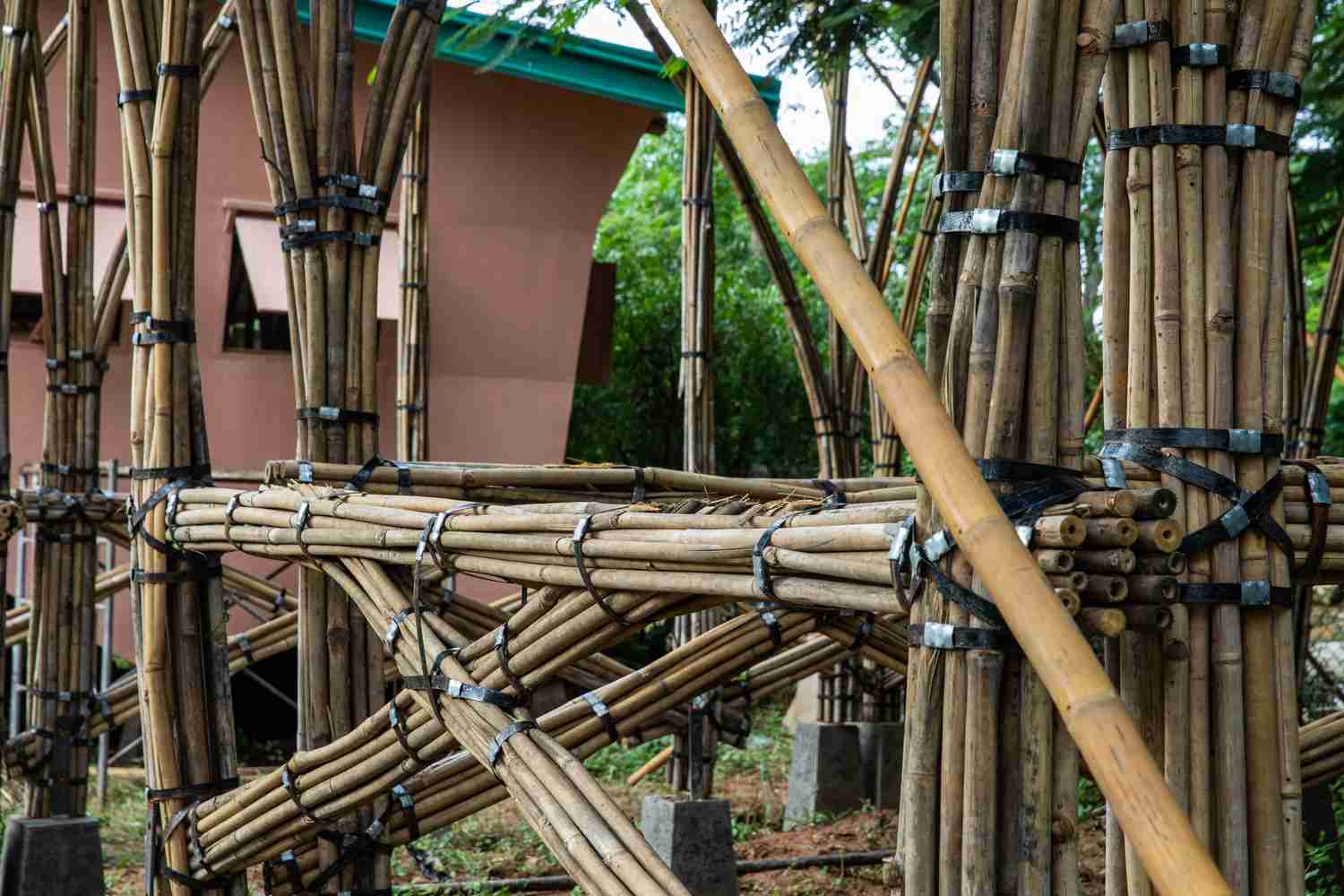
Four such frames interlock to create a rigid structural core, upon which floors, walls and roofing are mounted.
Going forward, Blue Temple plans a 550sqm bamboo workshop in Bago to prefabricate hundreds of houses annually. The system is even being adapted internationally, with engineers applying its principles to larger buildings in Madagascar. What started as a response to Myanmar’s crisis is now evolving into a global model for resilient, community-driven construction.
Project details
Project name: Housing NOW
Location: Bago, Myanmar
Type: Social Housing
Completion: 2025
Studio: Blue Temple
Lead architects: Raphael Ascoli
Architect: Nyan Lin Aung and Bhone Mo Win Khet
Architect / Partner: Htoo Aung
Bamboo construction: KoZin
Visual artist: Antonio Distante
Photographs: Aung Htay Hlaing and Raphael Ascoli